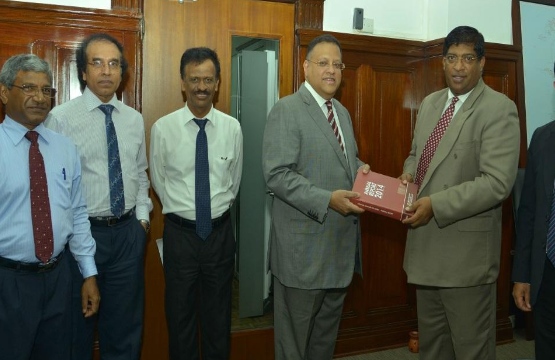April, 30, 2015

The Central Bank of Sri Lanka (CBSL) has released its Annual Report for 2014 and according to it Sri Lanka’s economic growth rate or Gross Domestic Product (GDP) has risen by 7.4 per cent during the last year.
Sri Lanka’s economic growth rate stood at 7.2 per cent during 2013.
The CBSL has stated that during 2014 while Sri Lanka’s industrial sector rose by 11.4 percent and the services sector by 6.5 per cent, the agricultural sector has risen marginally only by 0.3 per cent since unfavourable weather conditions had affected this sector badly.
Meanwhile, due to the fall in state revenue the budget deficit in 2014 has widened to 06 per cent as a percentage of the GDP while the budget deficit was 5.9 per cent in 2013.
A significant feature is, as a percentage of the GDP, the state borrowings has fallen from 78.3 per cent to 75.5 per cent while by end 2014 inflation had fallen to 2.1 per cent.
Similarly, the unemployment ratio which stood at 4.4 per cent in 2013 has fallen to 4.3 per cent in 2014 the report states that last year the government has allocated Rs. 442.4 billion for economic and social infrastructure development and as a percentage of the GDP this is 4.5 per cent.
Amidst global economic crises Sri Lanka’s trade deficit in 2014 has fallen to 11.1 from the earlier 11.3 per cent as a percentage of the GDP.
Are these economic data correct?
A significant feature here is these economic activities for 2014 being under the former government and the relevant Central Bank report being released by the new government.
While the new government had leveled allegations of doubts against the former regime on its economic data, it is not clear whether attention has been focused on this issue while releasing the Central Bank’s 2014 report.
World Bank forecasts fall of economic growth in 2015
The World Bank had recently announced that it expected the growth of the construction sector to fall and Sri Lanka’s economic growth in 2015 also to fall to 6.9 per cent of the GDP compared to the earlier year due to the re-evaluation of the infrastructure facility development projects by the new government.
The World Bank’s South Asia Economic Focus Report revealed this forecast while warning that whenever there is a fuel price hike in the world market it would exert pressure on Sri Lanka’s economy.
The World Bank had also pointed out that the government should go beyond the popular budgetary promises and thus increasing its expenditure and instead it is important take future steps to increase its revenue and bridge the budget deficit.
Video Story